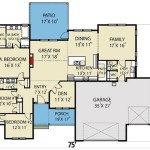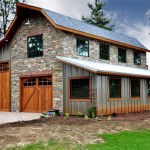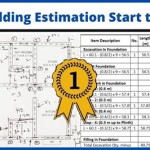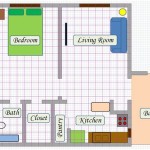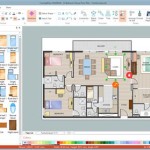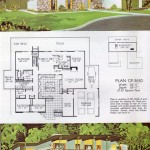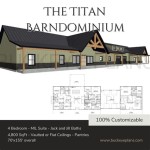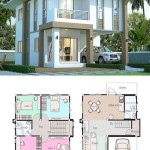Very Small House Design Plans: Maximizing Space and Function
The increasing appeal of very small house design plans reflects a paradigm shift in housing preferences. Factors like affordability, simplified living, and environmental consciousness contribute to this trend. Designing a very small house presents unique challenges and opportunities. It necessitates careful consideration of space optimization, multifunctional design, and efficient material usage to create a comfortable and functional living environment within a limited footprint.
Key Considerations in Very Small House Design
Designing a very small house requires a strategic approach focusing on efficient space utilization and thoughtful planning. Several key considerations are paramount to achieving a successful design that meets the occupants' needs without sacrificing comfort or functionality.
Firstly, a comprehensive needs assessment is crucial. This involves identifying the essential activities that will take place within the house, such as sleeping, cooking, working, and relaxing. Understanding these needs helps prioritize space allocation and identify opportunities for combining functions within a single area. For instance, a living room might double as a guest bedroom with a pull-out sofa bed.
Secondly, incorporating multifunctional furniture is essential. Items such as folding tables, storage ottomans, and Murphy beds can serve multiple purposes, maximizing the utility of each square foot. These pieces allow spaces to transform easily throughout the day, adapting to different activities. For instance, a dining table can be folded away when not in use, freeing up space for other purposes.
Thirdly, vertical space should be exploited to its full potential. High ceilings can create a sense of spaciousness and allow for the incorporation of lofts for sleeping or storage. Shelves and cabinets that extend to the ceiling provide ample storage without taking up valuable floor space. Utilizing vertical space helps to de-clutter the living area and maintain a more organized and visually appealing environment.
Finally, natural light plays a crucial role in making a small space feel larger and more inviting. Large windows and skylights can flood the interior with natural light, creating a brighter and more open atmosphere. Strategic placement of windows can also provide views of the outdoors, further enhancing the sense of space. Proper ventilation is also important to ensure a comfortable and healthy living environment within a compact space.
Space Optimization Techniques in Very Small House Design
Effective space optimization is paramount in very small house design. Employing various strategies can dramatically enhance the usability and livability of a compact dwelling. These techniques focus on maximizing every available inch and creating a sense of spaciousness despite the limited square footage.
Open floor plans are frequently employed to create a more flowing and interconnected living space. By eliminating unnecessary walls, the interior feels larger and more airy. The kitchen, living room, and dining area can be combined into a single, unified space, allowing for greater flexibility and interaction. Zoning within the open plan can be achieved through the use of furniture placement, area rugs, and changes in flooring materials to define different areas within the overall space.
Built-in storage solutions are another key element of space optimization. Custom-designed cabinets, shelves, and drawers can be integrated into walls and under stairs to maximize storage capacity. Built-in furniture can also serve multiple purposes, such as a window seat with storage underneath or a platform bed with built-in drawers. These integrated solutions minimize clutter and streamline the living space.
The use of pocket doors and sliding doors can also save significant space compared to traditional hinged doors. Pocket doors slide into the wall cavity, eliminating the need for swinging door space, which can be particularly beneficial in narrow hallways and bathrooms. Sliding doors can be used to create flexible partitions between rooms, allowing for privacy when needed while maintaining an open flow when desired.
Careful consideration of furniture size and scale is also essential. Opting for smaller, lightweight furniture pieces prevents the space from feeling cramped and overcrowded. Modular furniture can be easily rearranged to adapt to different activities and needs. Light-colored furniture and walls can also help to visually expand the space, creating a brighter and more airy atmosphere.
Finally, minimizing clutter is crucial for maintaining a sense of order and spaciousness. Regular decluttering and smart storage solutions are essential for keeping the living space organized and functional. Implementing a minimalist approach to decoration and possessions can also contribute to a more streamlined and peaceful living environment.
Integration of Efficient Systems and Sustainable Practices
Beyond space optimization, very small house design plans benefit significantly from the integration of efficient systems and sustainable practices. These elements not only reduce the environmental impact of the dwelling but also lower operating costs and enhance the overall quality of life for the occupants.
Energy efficiency is a primary consideration. Integrating high-performance insulation, energy-efficient windows and doors, and a properly sealed building envelope can significantly reduce energy consumption for heating and cooling. Solar panels can be incorporated to generate renewable energy, further reducing reliance on fossil fuels. Smart home technology can be used to automate lighting, heating, and cooling systems, optimizing energy usage and reducing waste.
Water conservation is another important aspect of sustainable design. Installing low-flow toilets, showerheads, and faucets can significantly reduce water consumption. Greywater systems can be implemented to recycle water from showers and sinks for irrigation purposes. Rainwater harvesting systems can also be used to collect rainwater for non-potable uses, such as watering plants and washing outdoor surfaces.
Material selection plays a crucial role in sustainable building. Using locally sourced, recycled, and renewable materials can reduce the environmental impact of construction. Choosing durable and low-maintenance materials can also extend the lifespan of the dwelling and reduce the need for frequent replacements. Avoiding materials that contain volatile organic compounds (VOCs) can improve indoor air quality and create a healthier living environment.
Proper ventilation is essential for maintaining healthy indoor air quality. Natural ventilation can be enhanced through the strategic placement of windows and vents. Mechanical ventilation systems, such as heat recovery ventilators (HRVs) or energy recovery ventilators (ERVs), can be used to provide a continuous supply of fresh air while minimizing energy loss.
Finally, landscaping can contribute to the sustainability of the very small house. Planting native trees and shrubs can provide shade, reduce heat island effect, and create a more natural and inviting outdoor space. Permeable paving materials can be used to reduce stormwater runoff and recharge groundwater. Creating a small garden for growing vegetables and herbs can provide fresh produce while reducing reliance on commercially grown food.
By carefully considering these key points and incorporating innovative design strategies, very small house design plans can deliver comfortable, functional, and sustainable living spaces that meet the needs of a growing population seeking affordable and environmentally responsible housing options.

Tiny House Floor Plans With Lower Level Beds Tinyhousedesign

Beautiful Tiny House Plan Ideas For Your Inspiration

Tiny House Plan Examples

Small House Design Plans 5x7 With One Bedroom Hip Roof Tiny

Small House Plans Simple Floor Cool

Small House Designs Shd 2024001 Pinoy Eplans

Tiny House Plan Examples

Small Home Design Live 3d

Small House Design With Floor Plan 6 X M

4 Free Tiny House Floor Plans And Designs You Can Follow Realestate Com Au

